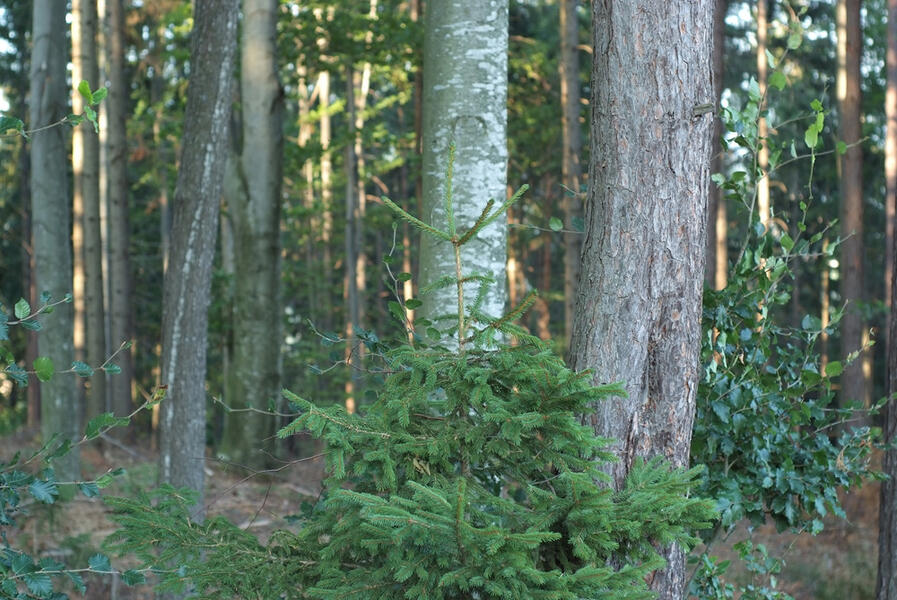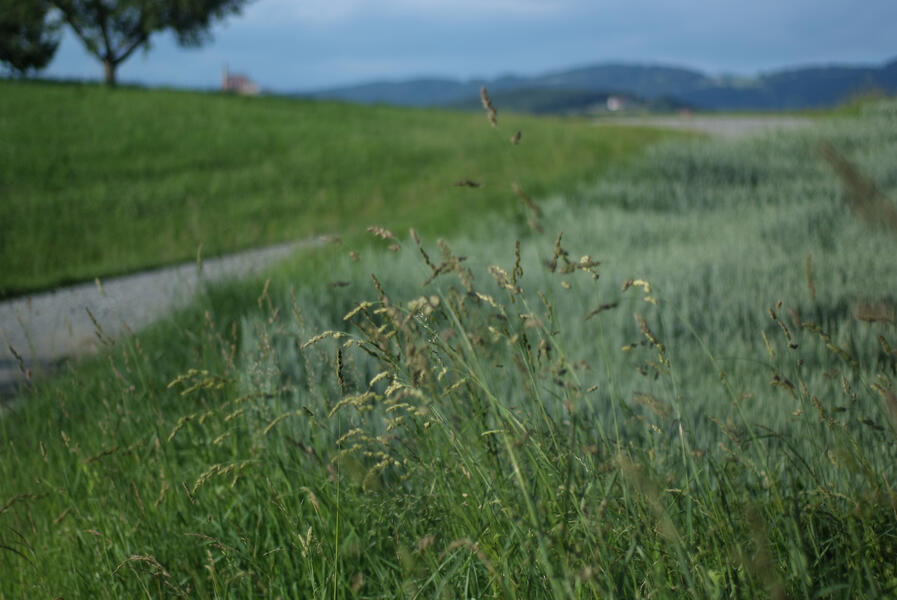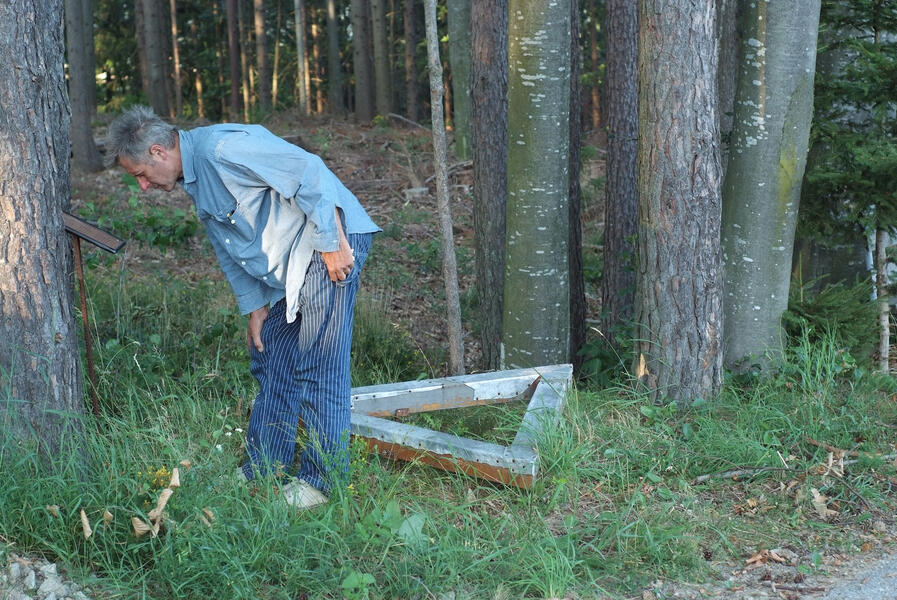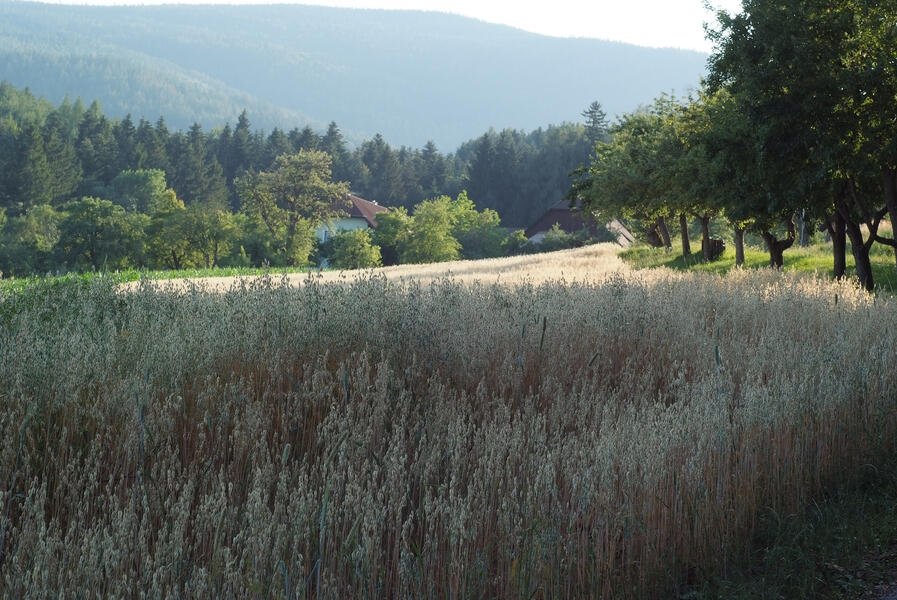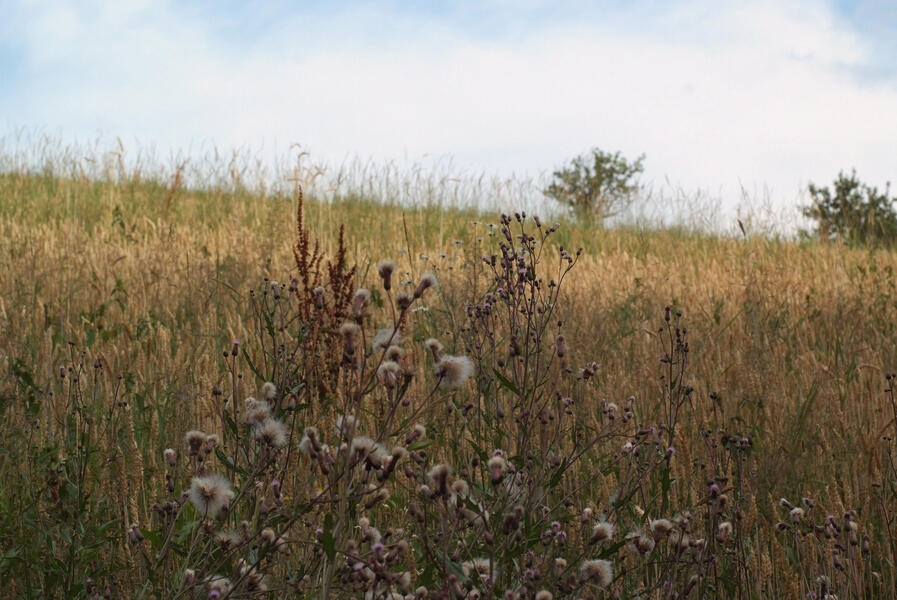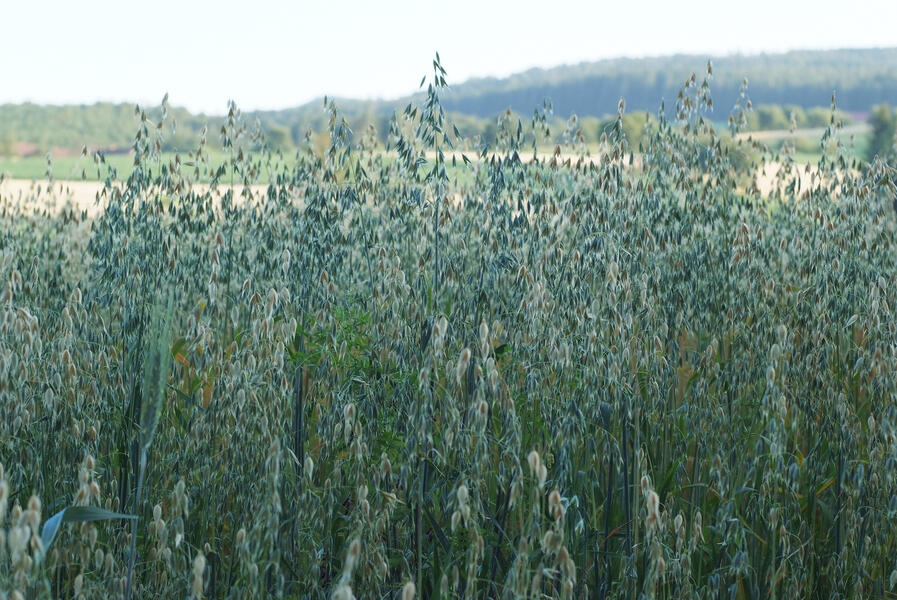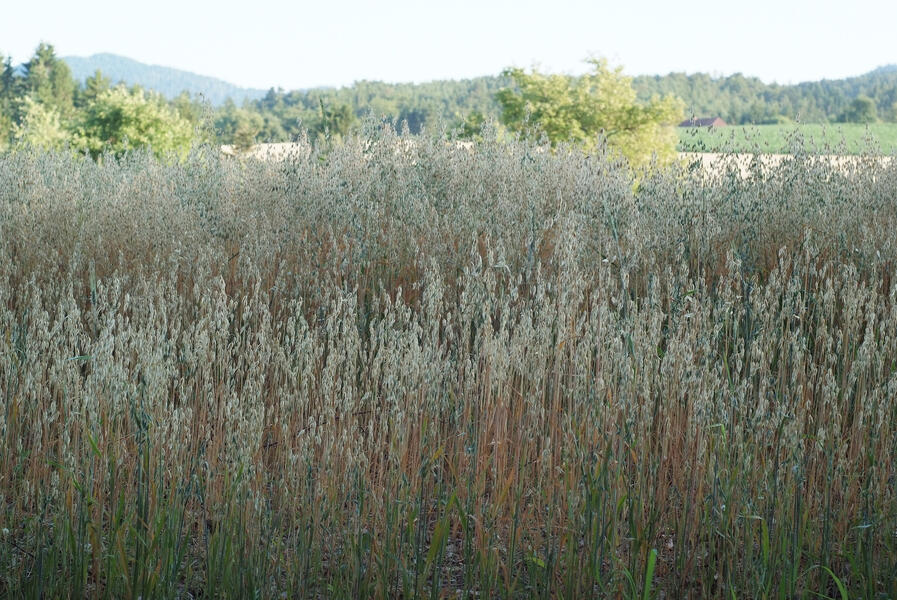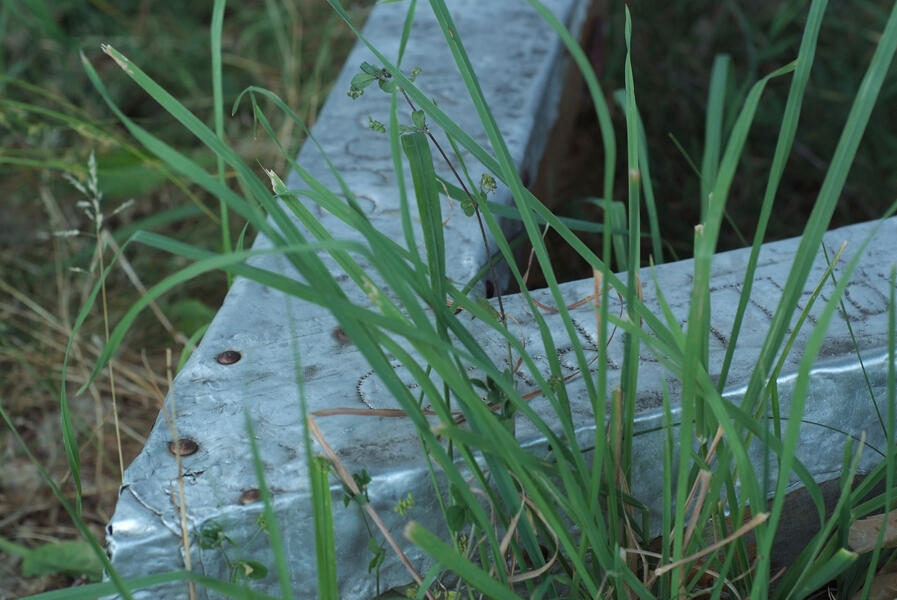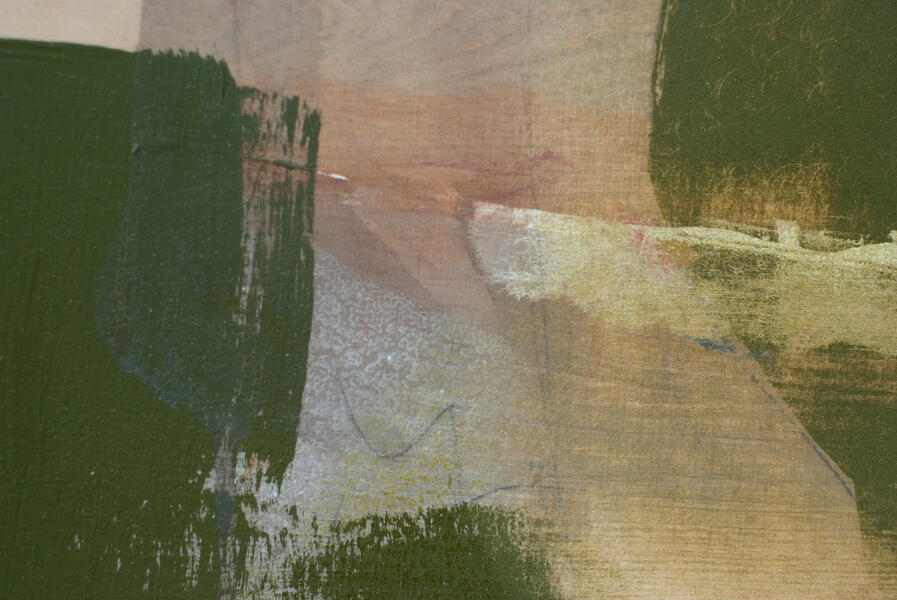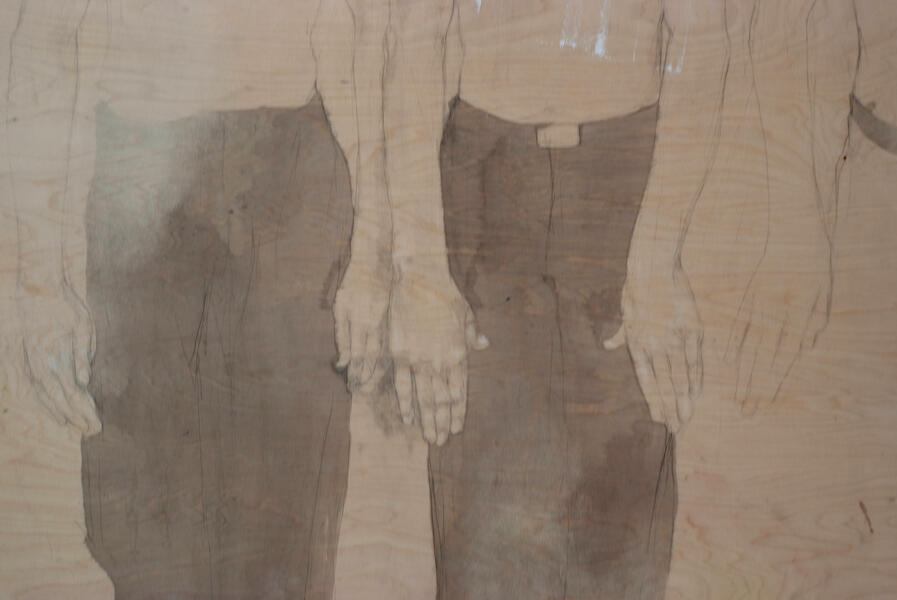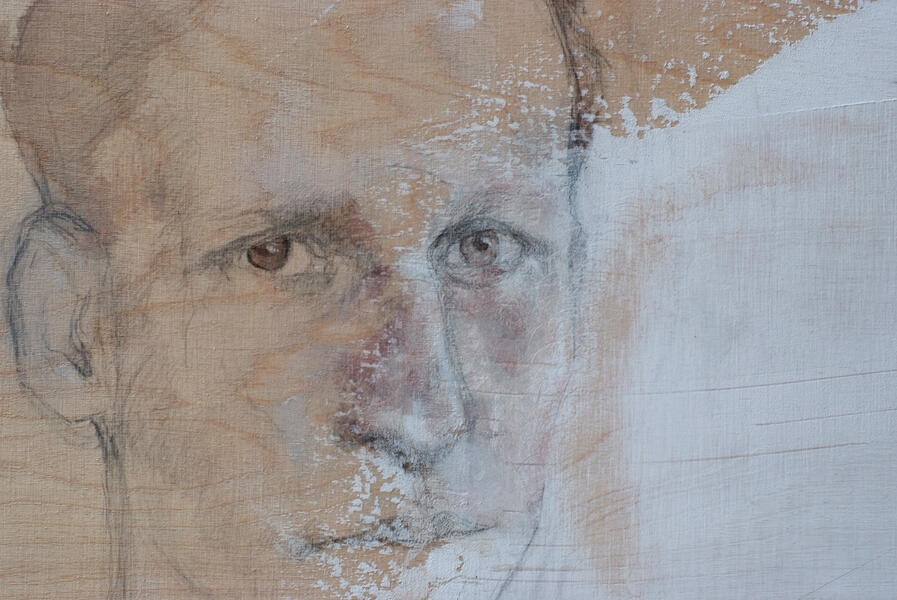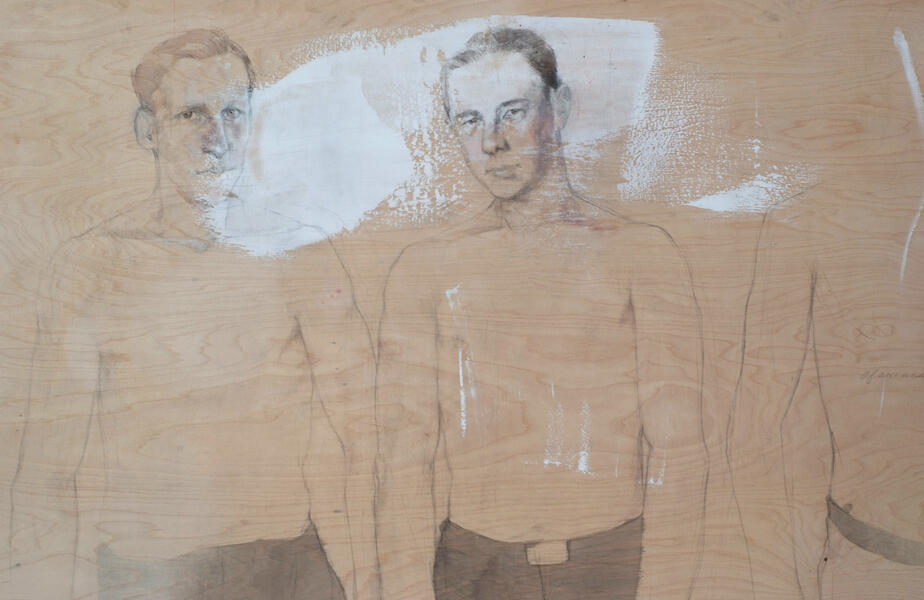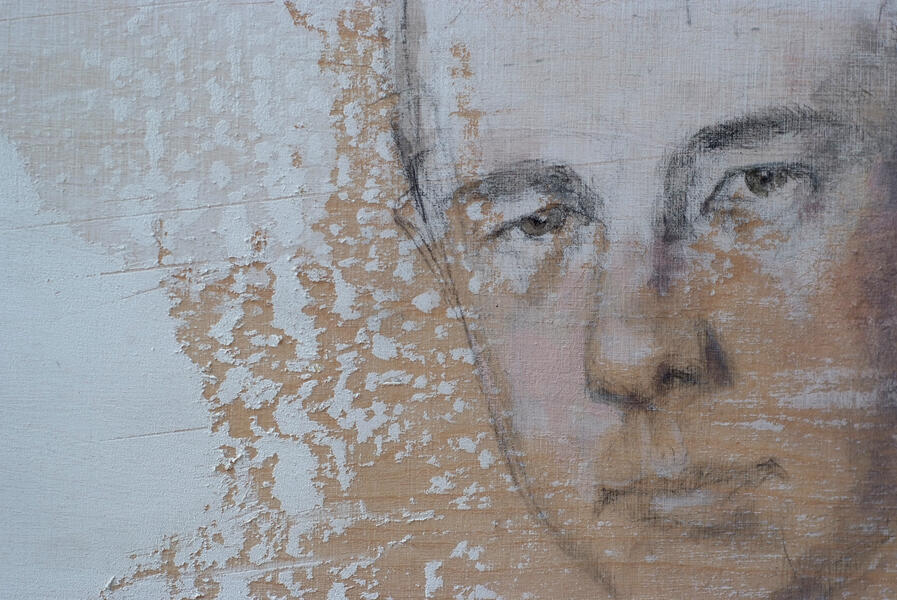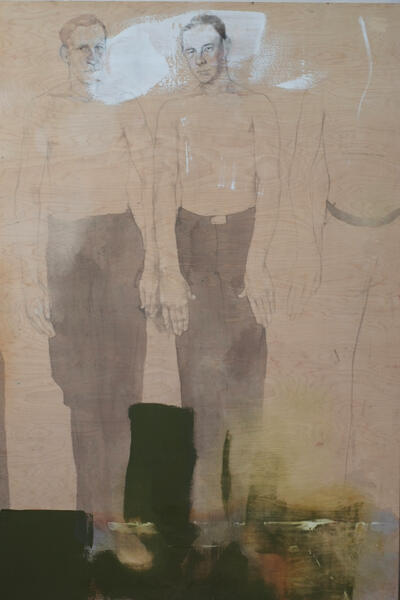About Emily
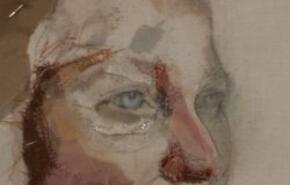
Emily Suzanne Hines graduated magna cum-laude from Maryland Institute College of Art with a BFA studying painting, illustration, and art history. Raised in a single parent family with a sister close in age, an assortment of eccentric misbehaving pets, and a house ever filling with half finished projects, Hines grew up surrounded by an incredible quantity of odd items rescued from trash cans, thrift stores, and yard sales and flea markets. Gleaning and making from available resources are a… more
Jump to a project:
Illustration
-
 Song at JP
Song at JP -
 cathorrordetail-2.jpg
cathorrordetail-2.jpg -
 untitled 2
untitled 2 -
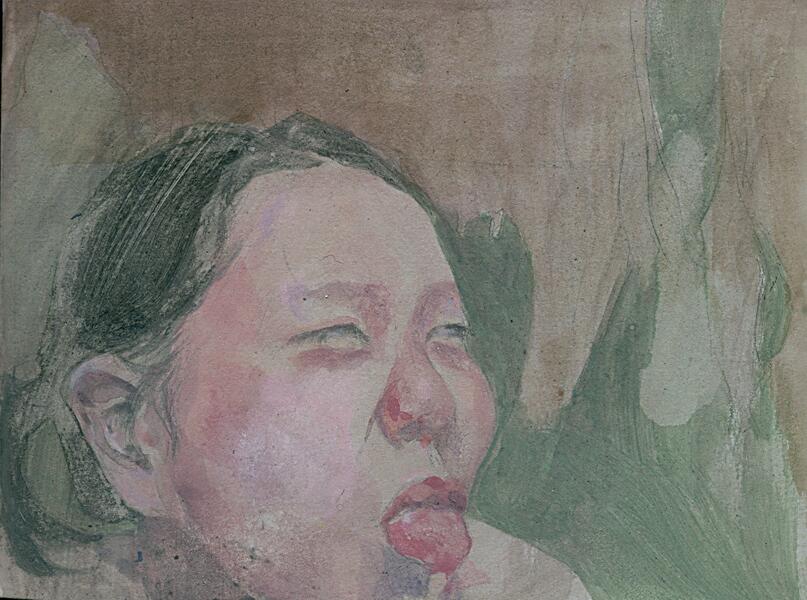 Christina's memory 2graphite and acrylic on illustration board
Christina's memory 2graphite and acrylic on illustration board -
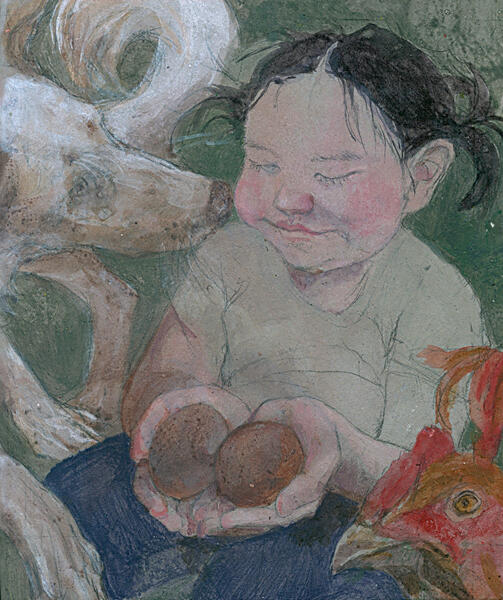 Christina's memorygraphite and acrylic on illustration board
Christina's memorygraphite and acrylic on illustration board -
 untitledgraphite and oil
untitledgraphite and oil -
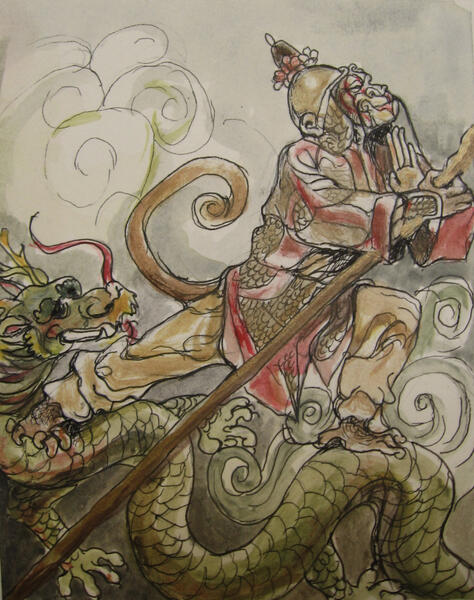 Monkey Kingink and acrylic on bristol
Monkey Kingink and acrylic on bristol -
 Lumber Jacksonink on paper
Lumber Jacksonink on paper -
 Two Brothersink and acrylic on bristol
Two Brothersink and acrylic on bristol -
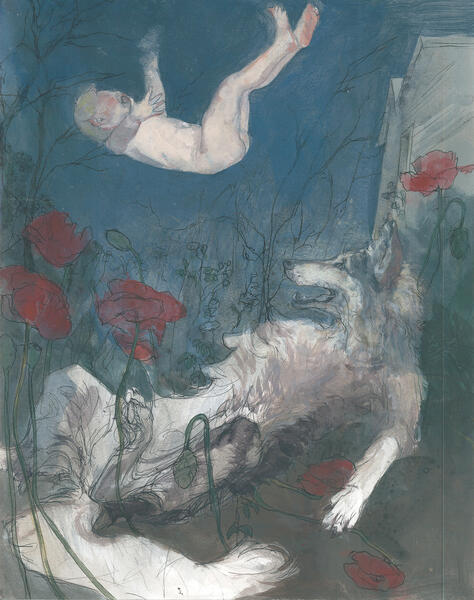 Mistress WolfAcrylic on Bristol
Mistress WolfAcrylic on Bristol
Liberation Response, The Crash Site (one of them)
The Following project description penned by Janice Schuetzenhofer places the works you see here in context.
Invited as an exchange student to participate as a resident artist as part of a team comprised of Austrians and American, I was charged to produce a work from my perspective in response to what I would experience while working on "Liberation 45". I spent 2 months living and working with the artist and several local families in and around Polleau(Styria), Austria, and hop to eventually pursue a Fulbright involving accounts of Austrians and Americans who have worked towards healing and reconciliation.
Liberation 45:
Four graduates of the Maryland Institute College of Art (Josef Schuetzenhofer, Douglas Hoagg, William Contino, and Emily Hines) recently completed and positioned an art object on public grounds in the rural town of Poellau, Austria.
The project was initiated by Joseph Schuetzenhoefer, who is a native of the Austria. This art project is a reaction to the historical local activities during WWII and also to the regional resistance towards dealing with the subject matter. The project was started in 2001 and is an ongoing project which includes exhibitions, documentations (film and literary), lectures, an exchange program for artists and authors, the ?Library of Friendship? at Alfred University (a collection of Austrian art publications), and historical and sociological research projects.
Together with Dr. Klaus Zeyringer, a professor of German literature and local resident, Schuetzenhoefer chose to create a work of art that is in contrast to the town war memorial which glorifies the local ?war heroes?, but has no mention of the countless allied soldiers who lost their lives in the area during the war to liberate Europe from National Socialism.
The local authorities refused to support this project, or to even give consent for an appropriate site for the art object. After numerous attempts to work together with the town council representatives failed, the decision was made not only to carry on independently, but also to endow the project with an international participation which reflects the allied involvement.
A petition was started to apply pressure on the Poellau town representatives. The petition was initiated by Gerhard Ruiss of the IG Autoren (Authors Council) in Vienna and was signed by hundreds of leading Austrian authors, artists, musicians, entertainers, etc.- including the Nobel Prize winning author, Elfriede Jelinek.
The project was ?adopted? and is supported by the Styrian Cultural Initiative under the direction of Mr. Herbert Nichols-Schweiger. The Styrian Cultural Initiative is a state funded organization which works with public space artwork. Without the intervention of this initiative, a site in town would not have been approved.
The artists arrived the last week in June, and the object was built and installed within a 10 day session of creative and stressful labour and with the assistance of numerous other local residents. Approximately 200 persons attended the lecture and unveiling of the art object on its temporary site in the town park.
The art object was designed to mimic the shape of the rudder of a B24 WWII aircraft. The 4 painted images represent the 4 downed U.S. Air Force planes which crashed in the local area during the war. Two silk screen images are printed on one side- one of an American Air Force division, and the other is a Russian division who crashed or fought at the wars end in Poellau. The names of the airmen who lost their lives in these crashes are listed on the object.
Invited as an exchange student to participate as a resident artist as part of a team comprised of Austrians and American, I was charged to produce a work from my perspective in response to what I would experience while working on "Liberation 45". I spent 2 months living and working with the artist and several local families in and around Polleau(Styria), Austria, and hop to eventually pursue a Fulbright involving accounts of Austrians and Americans who have worked towards healing and reconciliation.
Liberation 45:
Four graduates of the Maryland Institute College of Art (Josef Schuetzenhofer, Douglas Hoagg, William Contino, and Emily Hines) recently completed and positioned an art object on public grounds in the rural town of Poellau, Austria.
The project was initiated by Joseph Schuetzenhoefer, who is a native of the Austria. This art project is a reaction to the historical local activities during WWII and also to the regional resistance towards dealing with the subject matter. The project was started in 2001 and is an ongoing project which includes exhibitions, documentations (film and literary), lectures, an exchange program for artists and authors, the ?Library of Friendship? at Alfred University (a collection of Austrian art publications), and historical and sociological research projects.
Together with Dr. Klaus Zeyringer, a professor of German literature and local resident, Schuetzenhoefer chose to create a work of art that is in contrast to the town war memorial which glorifies the local ?war heroes?, but has no mention of the countless allied soldiers who lost their lives in the area during the war to liberate Europe from National Socialism.
The local authorities refused to support this project, or to even give consent for an appropriate site for the art object. After numerous attempts to work together with the town council representatives failed, the decision was made not only to carry on independently, but also to endow the project with an international participation which reflects the allied involvement.
A petition was started to apply pressure on the Poellau town representatives. The petition was initiated by Gerhard Ruiss of the IG Autoren (Authors Council) in Vienna and was signed by hundreds of leading Austrian authors, artists, musicians, entertainers, etc.- including the Nobel Prize winning author, Elfriede Jelinek.
The project was ?adopted? and is supported by the Styrian Cultural Initiative under the direction of Mr. Herbert Nichols-Schweiger. The Styrian Cultural Initiative is a state funded organization which works with public space artwork. Without the intervention of this initiative, a site in town would not have been approved.
The artists arrived the last week in June, and the object was built and installed within a 10 day session of creative and stressful labour and with the assistance of numerous other local residents. Approximately 200 persons attended the lecture and unveiling of the art object on its temporary site in the town park.
The art object was designed to mimic the shape of the rudder of a B24 WWII aircraft. The 4 painted images represent the 4 downed U.S. Air Force planes which crashed in the local area during the war. Two silk screen images are printed on one side- one of an American Air Force division, and the other is a Russian division who crashed or fought at the wars end in Poellau. The names of the airmen who lost their lives in these crashes are listed on the object.
Liberation of Austria (Response)
The Following project description penned by Janice Schuetzenhofer places the works you see here in context.
Invited as an exchange student to participate as a resident artist as part of a team comprised of Austrians and American, I was charged to produce a work from my perspective in response to what I would experience while working on "Liberation 45". I spent 2 months living and working with the artist and several local families in and around Polleau(Styria), Austria, and hop to eventually pursue a Fulbright involving accounts of Austrians and Americans who have worked towards healing and reconciliation.
Liberation 45:
Four graduates of the Maryland Institute College of Art (Josef Schuetzenhofer, Douglas Hoagg, William Contino, and Emily Hines) recently completed and positioned an art object on public grounds in the rural town of Poellau, Austria.
The project was initiated by Joseph Schuetzenhoefer, who is a native of the Austria. This art project is a reaction to the historical local activities during WWII and also to the regional resistance towards dealing with the subject matter. The project was started in 2001 and is an ongoing project which includes exhibitions, documentations (film and literary), lectures, an exchange program for artists and authors, the ?Library of Friendship? at Alfred University (a collection of Austrian art publications), and historical and sociological research projects.
Together with Dr. Klaus Zeyringer, a professor of German literature and local resident, Schuetzenhoefer chose to create a work of art that is in contrast to the town war memorial which glorifies the local ?war heroes?, but has no mention of the countless allied soldiers who lost their lives in the area during the war to liberate Europe from National Socialism.
The local authorities refused to support this project, or to even give consent for an appropriate site for the art object. After numerous attempts to work together with the town council representatives failed, the decision was made not only to carry on independently, but also to endow the project with an international participation which reflects the allied involvement.
A petition was started to apply pressure on the Poellau town representatives. The petition was initiated by Gerhard Ruiss of the IG Autoren (Authors Council) in Vienna and was signed by hundreds of leading Austrian authors, artists, musicians, entertainers, etc.- including the Nobel Prize winning author, Elfriede Jelinek.
The project was ?adopted? and is supported by the Styrian Cultural Initiative under the direction of Mr. Herbert Nichols-Schweiger. The Styrian Cultural Initiative is a state funded organization which works with public space artwork. Without the intervention of this initiative, a site in town would not have been approved.
The artists arrived the last week in June, and the object was built and installed within a 10 day session of creative and stressful labour and with the assistance of numerous other local residents. Approximately 200 persons attended the lecture and unveiling of the art object on its temporary site in the town park.
The art object was designed to mimic the shape of the rudder of a B24 WWII aircraft. The 4 painted images represent the 4 downed U.S. Air Force planes which crashed in the local area during the war. Two silk screen images are printed on one side- one of an American Air Force division, and the other is a Russian division who crashed or fought at the wars end in Poellau. The names of the airmen who lost their lives in these crashes are listed on the object.
Invited as an exchange student to participate as a resident artist as part of a team comprised of Austrians and American, I was charged to produce a work from my perspective in response to what I would experience while working on "Liberation 45". I spent 2 months living and working with the artist and several local families in and around Polleau(Styria), Austria, and hop to eventually pursue a Fulbright involving accounts of Austrians and Americans who have worked towards healing and reconciliation.
Liberation 45:
Four graduates of the Maryland Institute College of Art (Josef Schuetzenhofer, Douglas Hoagg, William Contino, and Emily Hines) recently completed and positioned an art object on public grounds in the rural town of Poellau, Austria.
The project was initiated by Joseph Schuetzenhoefer, who is a native of the Austria. This art project is a reaction to the historical local activities during WWII and also to the regional resistance towards dealing with the subject matter. The project was started in 2001 and is an ongoing project which includes exhibitions, documentations (film and literary), lectures, an exchange program for artists and authors, the ?Library of Friendship? at Alfred University (a collection of Austrian art publications), and historical and sociological research projects.
Together with Dr. Klaus Zeyringer, a professor of German literature and local resident, Schuetzenhoefer chose to create a work of art that is in contrast to the town war memorial which glorifies the local ?war heroes?, but has no mention of the countless allied soldiers who lost their lives in the area during the war to liberate Europe from National Socialism.
The local authorities refused to support this project, or to even give consent for an appropriate site for the art object. After numerous attempts to work together with the town council representatives failed, the decision was made not only to carry on independently, but also to endow the project with an international participation which reflects the allied involvement.
A petition was started to apply pressure on the Poellau town representatives. The petition was initiated by Gerhard Ruiss of the IG Autoren (Authors Council) in Vienna and was signed by hundreds of leading Austrian authors, artists, musicians, entertainers, etc.- including the Nobel Prize winning author, Elfriede Jelinek.
The project was ?adopted? and is supported by the Styrian Cultural Initiative under the direction of Mr. Herbert Nichols-Schweiger. The Styrian Cultural Initiative is a state funded organization which works with public space artwork. Without the intervention of this initiative, a site in town would not have been approved.
The artists arrived the last week in June, and the object was built and installed within a 10 day session of creative and stressful labour and with the assistance of numerous other local residents. Approximately 200 persons attended the lecture and unveiling of the art object on its temporary site in the town park.
The art object was designed to mimic the shape of the rudder of a B24 WWII aircraft. The 4 painted images represent the 4 downed U.S. Air Force planes which crashed in the local area during the war. Two silk screen images are printed on one side- one of an American Air Force division, and the other is a Russian division who crashed or fought at the wars end in Poellau. The names of the airmen who lost their lives in these crashes are listed on the object.
Ever Seeing
These works are about frustrated intimacy inter-between human hearts and their Father. It seems to be about overcoming bitterness, loneliness, blindness, numbness, and disillusionment. These are individuals that i know or have known and love. It is an ongoing collection of studies and ponderings.
-
Tired Kelliacrylic and graphite on muslin
-
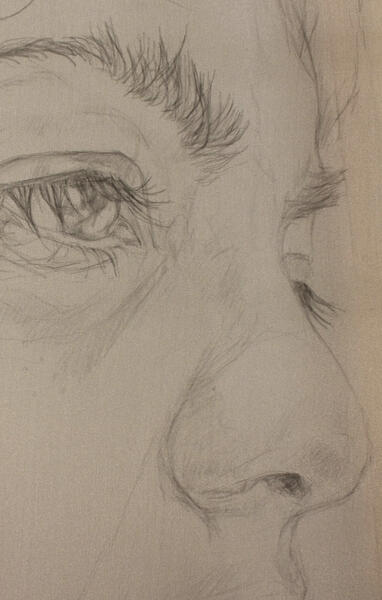 Brow, detailgraphite on silk
Brow, detailgraphite on silk -
 Browgraphite on silk
Browgraphite on silk -
Enlightenment=Eugenicsgraphite on muslin
-
 Enlightenment =Eugenicsgraphite on muslin
Enlightenment =Eugenicsgraphite on muslin -
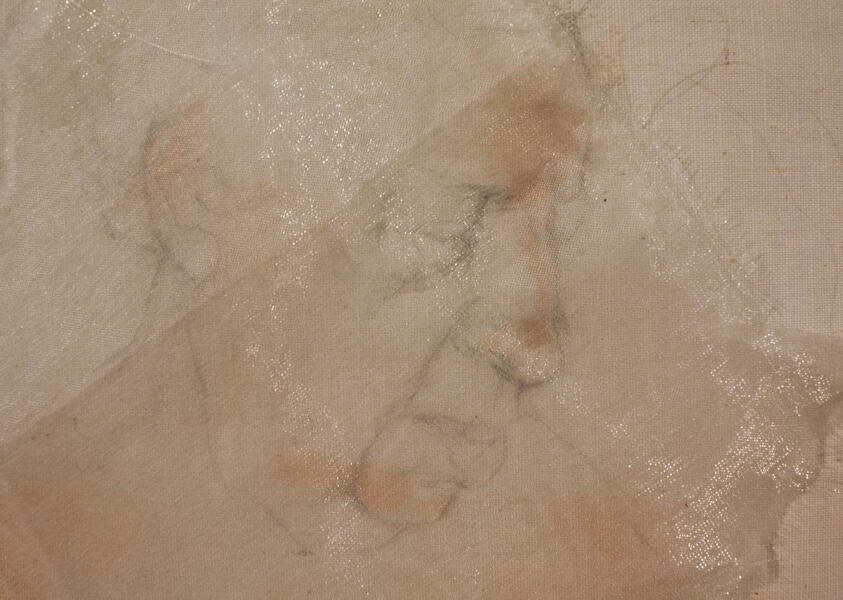 from Discarded People series, detailgraphite under sheer cloth on prepared muslin
from Discarded People series, detailgraphite under sheer cloth on prepared muslin -
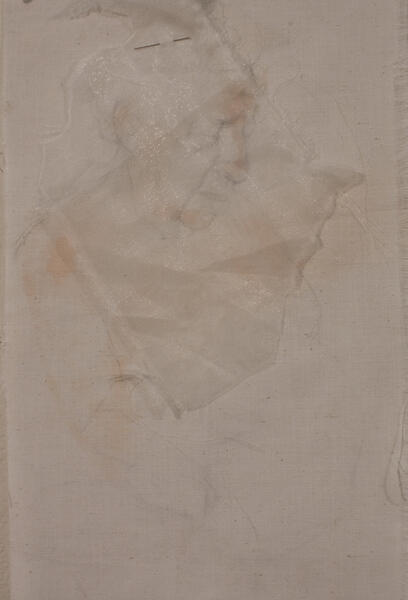 from Discarded People seriesgraphite under sheer cloth on prepared muslin
from Discarded People seriesgraphite under sheer cloth on prepared muslin -
Sleepergraphite on muslin
-
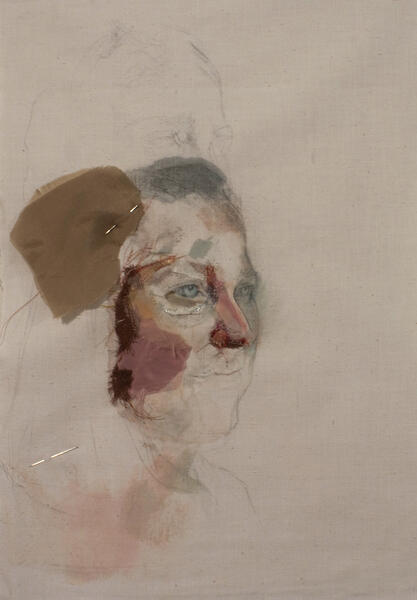 Ever Seeinggraphite, acrylic and cloth collaged on linen
Ever Seeinggraphite, acrylic and cloth collaged on linen -
 Ever Seeing, detailgraphite, acrylic and cloth collaged on linen
Ever Seeing, detailgraphite, acrylic and cloth collaged on linen
Up From Here
Created from gleaned scraps of transparent cloth as a painting medium, these images are the result of the feelings of scarcity and loss I experienced and re-experienced in transitional phases of grief.
-
 You and Not Your Gifts, detailgraphite on muslin and quilted cloth napkins
You and Not Your Gifts, detailgraphite on muslin and quilted cloth napkins -
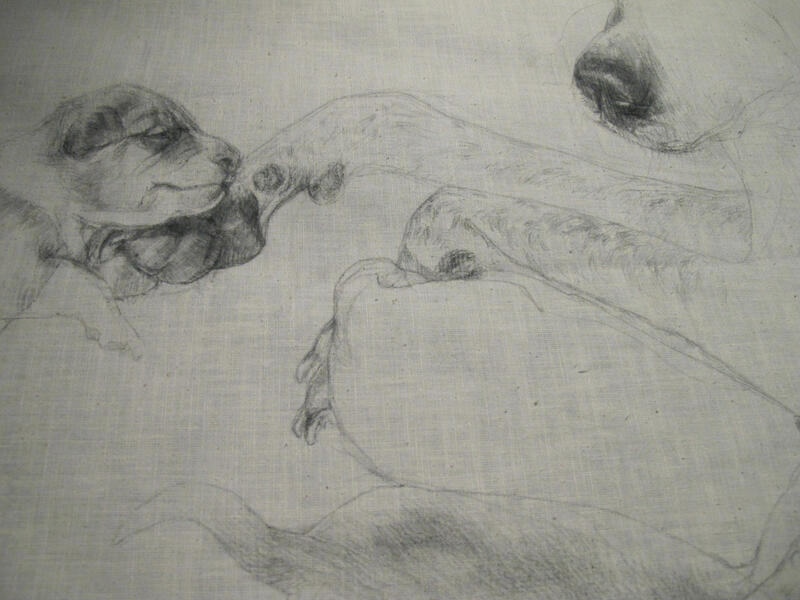 You and Not Your Gifts, detailgraphite on muslin and quilted cloth napkins
You and Not Your Gifts, detailgraphite on muslin and quilted cloth napkins -
 You and Not Your Giftsgraphite on muslin and quilted cloth napkins
You and Not Your Giftsgraphite on muslin and quilted cloth napkins -
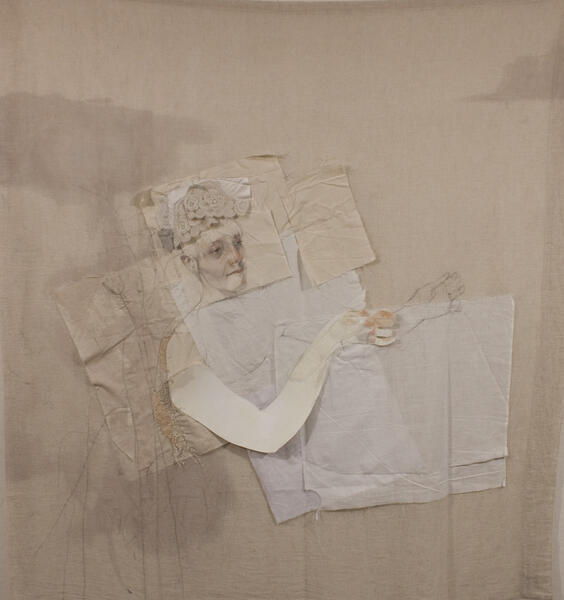 Instead ofgraphite, acrylic, fibers collage on muslin and linen
Instead ofgraphite, acrylic, fibers collage on muslin and linen -
Instead of, detailgraphite, acrylic, fibers collage on muslin and linen
-
Instead of, detailgraphite, acrylic, fibers collage on muslin and linen
-
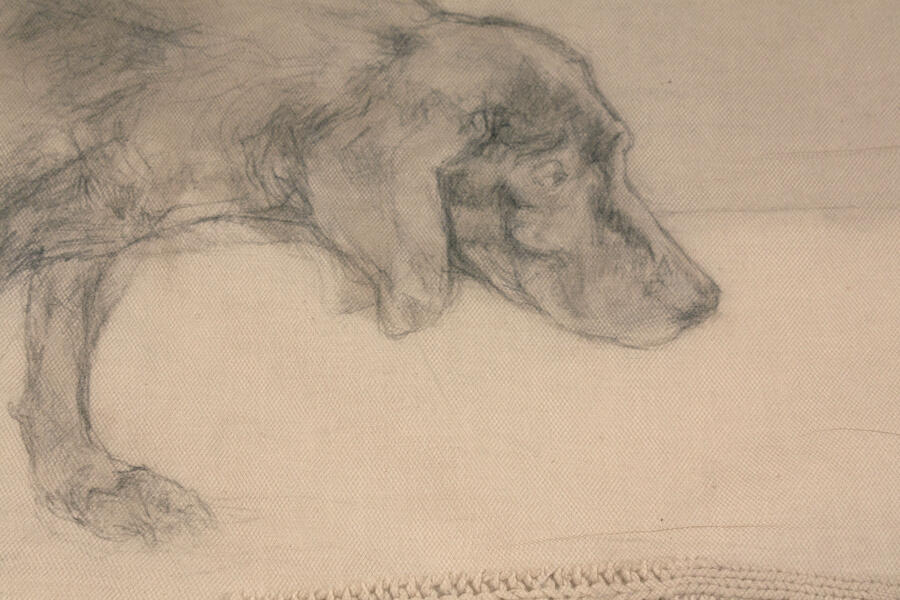 detail, In the Sleepgraphite, paint, fibers collage, and thread
detail, In the Sleepgraphite, paint, fibers collage, and thread -
In the Sleep, detailgraphite, paint, fibers collage, and thread
-
In the Sleep, detailgraphite, paint, fibers collage, and thread
-
In the Sleepgraphite, paint, fibers collage, and thread
Do Not Send Us
Collage drawings on muslin with found objects, these works became about an exploration of my origins and childhood companions. What happens to us as we reach maturation and what are our perceptions of this as we shift? Someone whom I respect pointed out that the real work being formed was a new process which enabled works such as these to materialize. They are what happen when I learn to tune into my intuition and make honestly apart from a spirit of competition, achievement, or comparison.
-
Do Not Send Us Up From Here, detailgraphite and acrylic on linen and muslin with collage
-
 That Which Was Passing AwayGraphite and Acrylic on cloth, collaged cloth napkins and paper
That Which Was Passing AwayGraphite and Acrylic on cloth, collaged cloth napkins and paper -
SuturedGraphite on Cloth
-
SuturedGraphite on Cloth
-
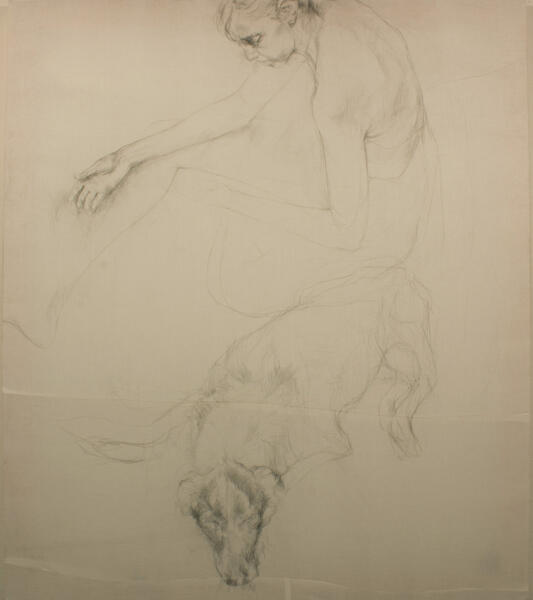 SuturedGraphite on Cloth
SuturedGraphite on Cloth -
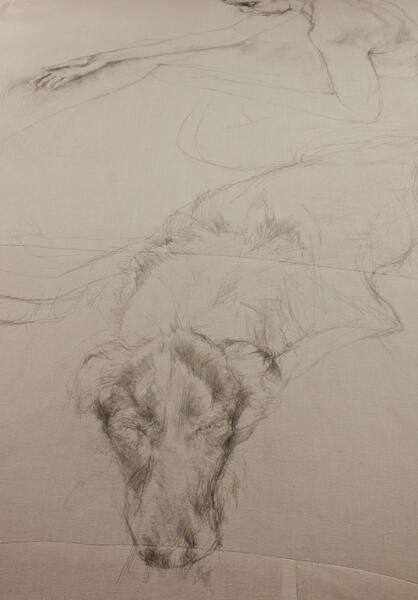 SuturedGraphite on Cloth
SuturedGraphite on Cloth -
Do Not Send Us Up From Heregraphite and acrylic on linen and muslin with collage
-
Do Not Send Us Up From Heregraphite and acrylic on linen and muslin with collage
-
Do Not Send Us Up From Here, detailgraphite on muslin
-
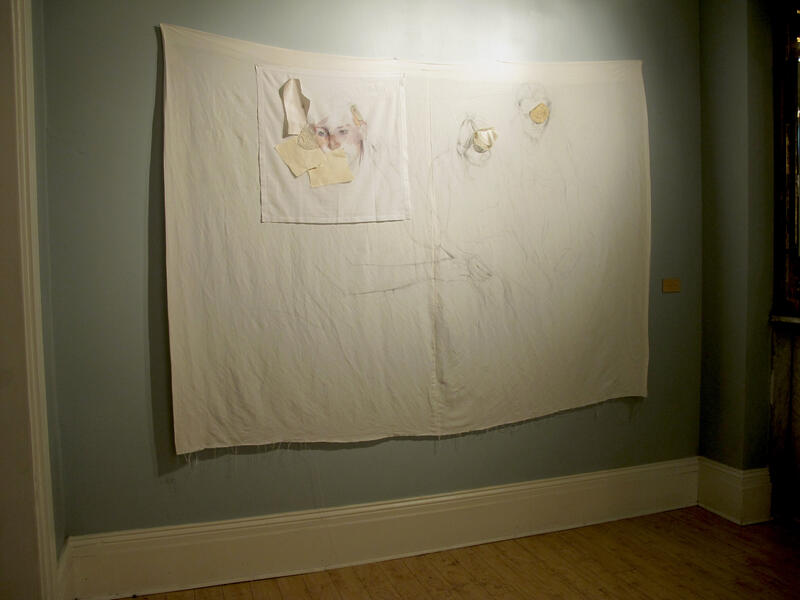 That Which Was Passing AwayGraphite and Acrylic on cloth, collaged cloth napkins and paper
That Which Was Passing AwayGraphite and Acrylic on cloth, collaged cloth napkins and paper
If Your Presence Does Not Go With Us
These experimental works use simple, conventional, and overlooked materials in innovative ways. Discarded silkscreen is used instead of paint to make flesh, paint is used to stain distressed silk. Experiments with texture and agitation of materials serve to raise questions about the aftermath of abuse in all its forms. The title suggests the need for a Spiritual life and relationship with a Protector and Friend in the wake of hardship.
-
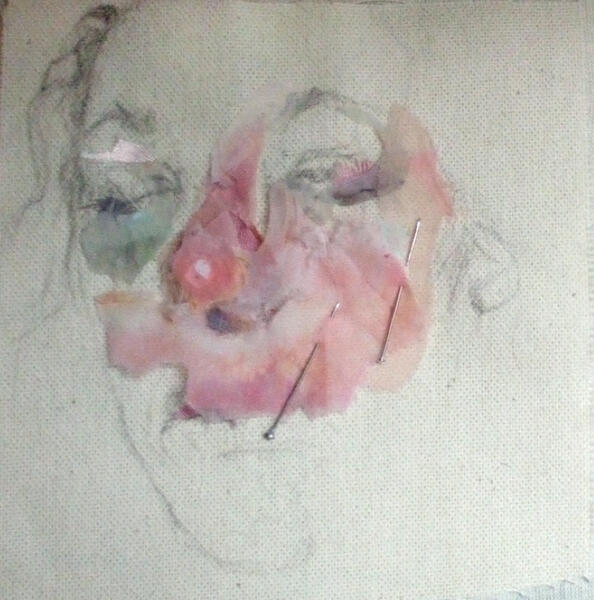 If Your Presence Does No Go With UsGraphite on canvas with collaged discarded silk screen and pins
If Your Presence Does No Go With UsGraphite on canvas with collaged discarded silk screen and pins -
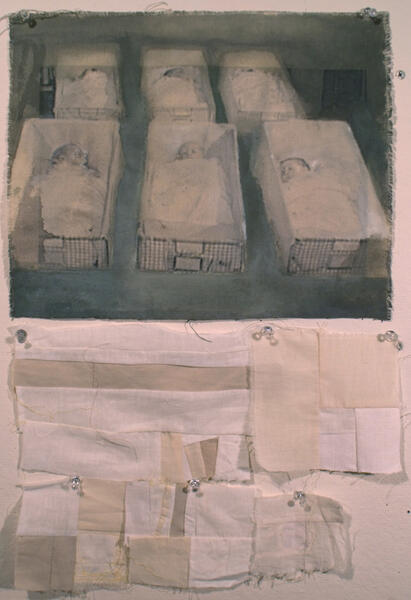 UntitledRe-appropriated archival photograph printed on canvas, painted, altered and quilt scraps made from muslin and cotton
UntitledRe-appropriated archival photograph printed on canvas, painted, altered and quilt scraps made from muslin and cotton -
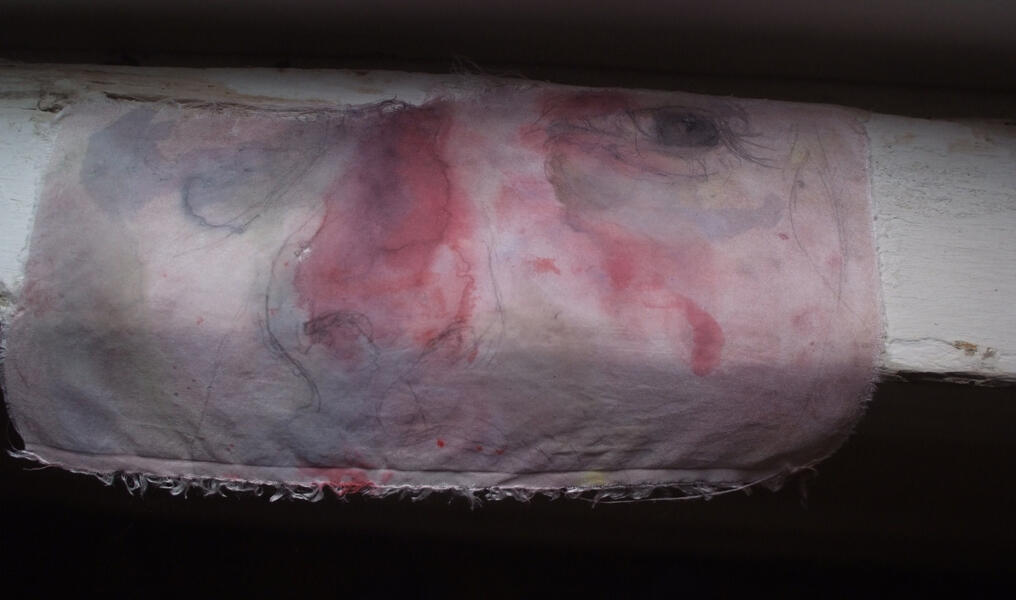 Transparent experiment 1graphite, acrylic on agitated silk
Transparent experiment 1graphite, acrylic on agitated silk -
Transparent Experiment 1, view 2graphite, acrylic on agitated silk










